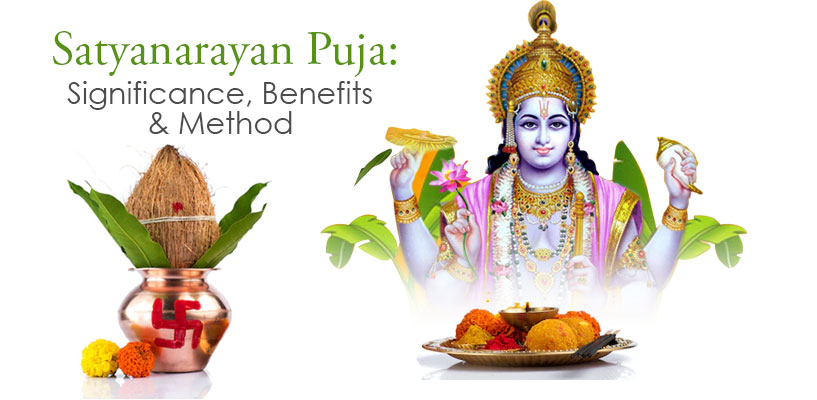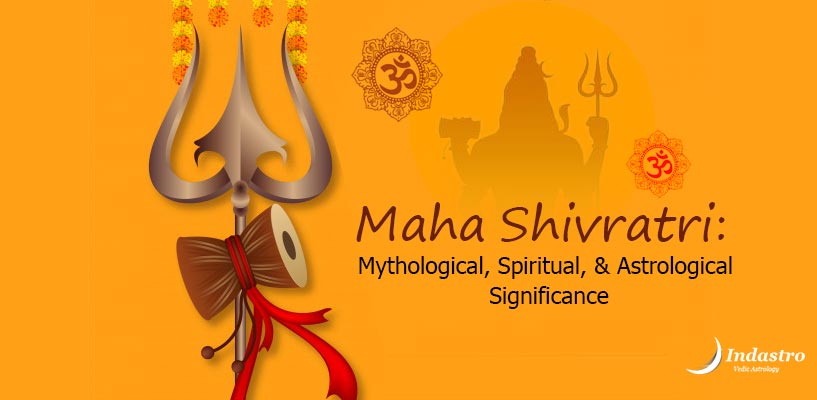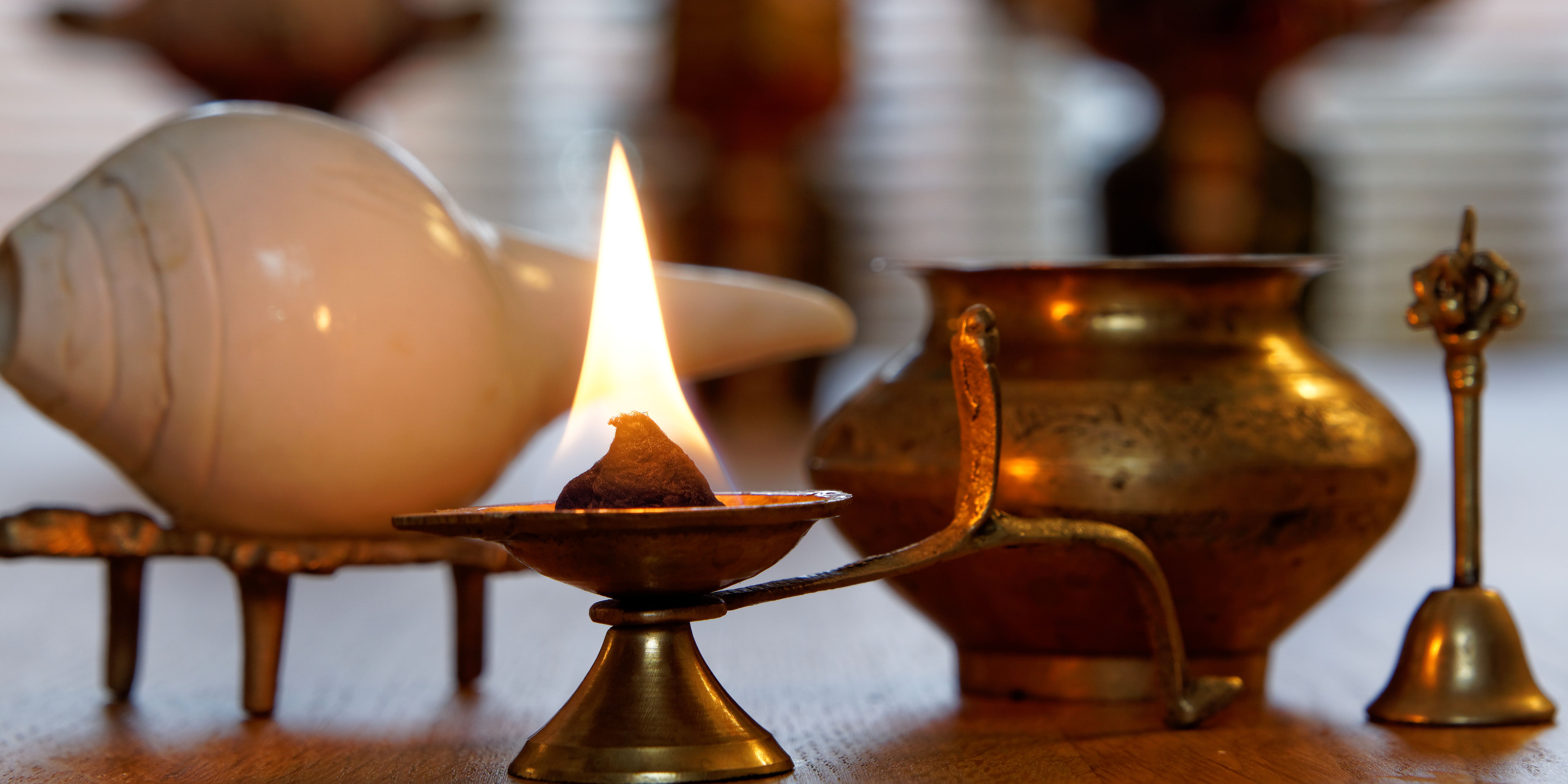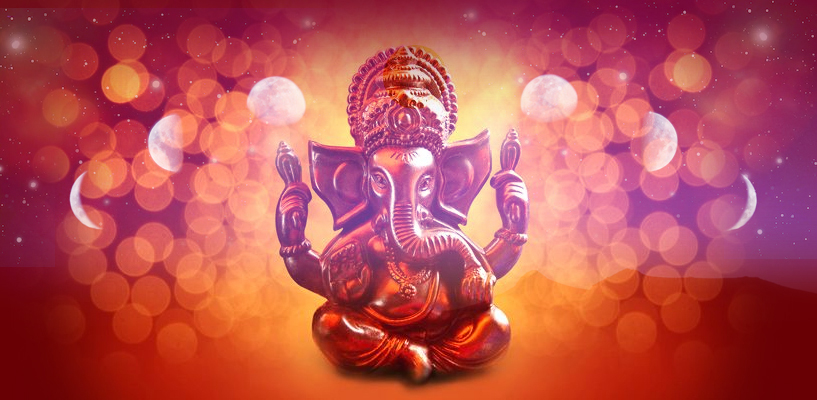Satyanarayan Puja: Significance, Benefits & Method
In Kalyug, Satyanarayan Puja can lift a person out of sorrows and suffering. How is this Puja performed? What is the science behind this Puja? Find answers in the article.
In the current times of Kalyug, also known as the ‘Age of Downfall’ or the final stage of the Yug cycle in Hinduism, Satyanarayan Puja can lift a person out of sorrows and suffering. It has many benefits that affect a person physically, mentally, emotionally, and spiritually.
Lord Satya Narayan
Satya Narayan is one of the manifestations of Narayan or Lord Vishnu and He is considered as the embodiment of truth. He is commonly worshipped by all Hindus who want to fulfil their desires; and worshipping Him brings respite from sufferings. However, the Puja must be performed in the manner prescribed and as per religious rites to be effective.
Benefits of Satyanarayan Puja
- Removes sorrow and suffering
- Grants wealth, prosperity and abundance
- Blesses one with progeny, healthy child
- Harmonious marital life
- Victory in all endeavours and against enemies
Science behind Satyanarayan Puja
Satya means truthfulness, for example: Satyamev Jayate (Truth Alone Triumphs) and Sat Chit Anand (True Bliss Consciousness). Again, Satya, Tap (Penance or Austerity), Pavitrata (Purity), Daya (Compassion) and Daan (Charity) are the limbs of Yoga. Similarly, the Mool Mantra or basic prayer in Sikhism is made up of five words: Ekonkar, Satnam, Kartapurkh, Nirbhau, Nirvair, which embody the Sikh belief in one God, Truth, Creative Power of God, Fearlessness, and Compassion.
Satya basically is the central concept of any dharma. It means whatever we think, do and say are the same and all our sensory organs are in unison. To practice Satya, we perform Satyanarayan Katha, which means on that day we wilfully don’t utter a lie. It is usually performed on the day of full moon, which affects the water retention in our body. Full moon also affects our thoughts and emotions, often shrouding them with turmoil, ups and downs. This heightens our negative aspect, to overcome which we fast during this day and seek divine blessings.
It is a day when we purify ourselves by not telling lies, refraining from non-verbal communication, and by not making complaints or holding grudges. We need to be in a loving and kind mode, distribute food and gifts to everyone. We also attract positive energy by detoxifying ourselves with the Holy Water and by accepting Panchamrit, which control the pitta dosha in our body. It is a day-long detoxification of the body, a shift from rajasic and tamasic to satvic existence, to a parasympathetic state.
When to perform Satyanarayan Puja ?
This Puja can be performed on:
- The Sankranti of each month, i.e., whenever the sun’s transit takes place.
- Full Moon as per the lunar position of each month.
Materials required for this Puja
- Idol or image of Satya Narayan
- Lamp or diya
- Incense
- Rangoli
- Mandap, banana plant, mango leaves
- Vermillion
- Raw rice to spread
- Yellow cloth and rick
- Sandalwood paste, kumkum
- Flowers, fruits
- Wheat powder and other materials to make Prasad
- Materials to make Panchamrit
- Wooden pieces if Havan is being performed
How to perform this Puja
First, take a bath. Remember that you have to observe a fast until the completion of the Puja. Since this Puja has to be performed with a pure mind and body, you need to pledge, ‘O Lord Satya Narayan, to receive your blessings, I am performing this ritual with full devotion and concentration.’
Clean the puja place and decorate it with a colourful rangoli. You can make a mandap by tying banana plants in the corners and lay down the yellow cloth as an aasan. Then pour the rick on the cloth; a kalash filled with water should be placed on the rice. Spread one more cloth and place the Satya Narayana idol or image on it. The mandal can be made of any material you can afford. Offer Panchamrit (the five nectars - milk, curd, ghee, sugar, and honey).
Method to perform the Puja:
- Sankalpam: Tell the Lord that you are performing this Puja to fulfil your wishes or desires and seek His permission to conduct it successfully.
- Vigneshwara Puja: Start by worshipping Lord Ganesha, requesting Him to give you the courage to fulfil this Puja without any obstacle. If you want to learn about Ganapati Yagna click here .
- Prarthana: Chant Gayatri Mantra and take permission from the Lord to do this powerful Puja.
- Pranayamam and Sankalpam: This involves purifying your breath and taking a vow to please Lord Ganesha.
- Kalash Puja: This involves extending an invitation for the worship to Lord Satya Narayan, represented by the kalash.
- Ganapati Pancha Loka Puja: Pray to the Lords of the five worlds - Ganesha, Brahma, Vishnu, Shiva, and Parvati.
- Navagraha Puja: Invite all the planets by invoking their names respectfully and offer akshadai (made of rice and haldi) and flower. Invoke the planets for their blessings to conduct this Puja.
- Indradi Ashtadikpala Puja: Invite and worship Lord Indra and the other Lords of the eight directions.
- Satyanarayana Puja: Offer flower on His feet by praising the Lord. Establish Pran Pratishtha, which is filling a divine object with ‘prana’ or life force, by chanting His 108 names and offering flowers at His feet. After that, take flowers in your hands and invoke the Lord to fulfil your wishes and bless your family with prosperity and abundance.
For Yagna (Optional):
After you have invoked Lord Satya Narayan, you can prepare the Havan Kund. Chant the Lord’s name while offering wooden pieces and applying ghee to the fire. Once the Havan or Yagna is done, recite five chapters from the Satyanarayan Katha.
What does each chapter of Satyanarayana Katha contain?
- Chapter 1: It is about the origin of Lord Satya Narayan.
- Chapter 2: Engages with the benefits of performing this Puja.
- Chapter 3: Talks about the misfortune that might occur if you break your vow / pledge.
- Chapter 4: It narrates the importance of performing this Pooja and consuming the Prasad.
- Chapter 5: It highlights the importance that must be paid to the Puja.
Who can worship Satya Narayan?
Lord Satya Narayan can be worshipped by people of any caste and religion; can be attended by everyone irrespective of age and gender. The Puja can be performed in the evening or even in the day. It is important to remember that after worshipping the Lord, it is mandatory to distribute the offering which is made of ghee, sugar, wheat, and banana. On this day, one must also listen to the story of Satya Narayan and end the Puja by performing Lord Satya Narayan Arti, post which you can have a feast and enjoy.
Indastro also has an article on how to design your prayer room. Click here to read
2026 Horoscope Reports
Translate





 Mahashivratri 8 March 2024: Significance & Auspicious Time
Mahashivratri 8 March 2024: Significance & Auspicious Time
 Ram Navami 17 April 2024: Significance & Auspicious Time
Ram Navami 17 April 2024: Significance & Auspicious Time
.png) The Sanctity and Purpose of Hindu Marriage
The Sanctity and Purpose of Hindu Marriage
 Eid-Ul-Fitr 2022 - A Complete Guide
Eid-Ul-Fitr 2022 - A Complete Guide
 What is the significance of Ganesh Chaturthi?
What is the significance of Ganesh Chaturthi?
